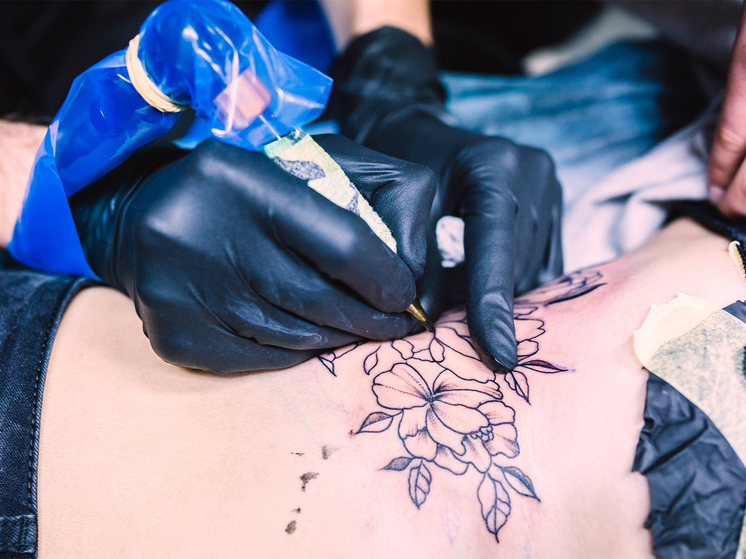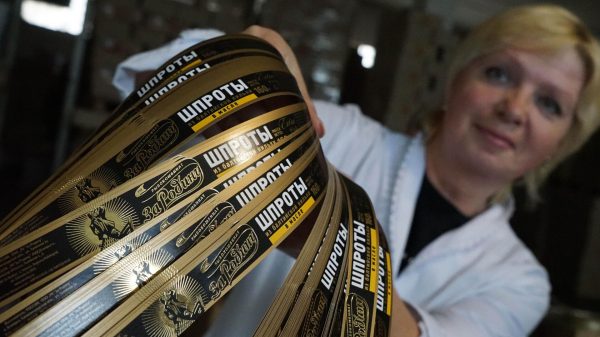“Transparency with customers is vital.”
Sealed tattoo and permanent ink bottles contain makeup, including those marked as sterile, contained millions of potentially dangerous bacteria.
 Photo: ru.freepik.com
Photo: ru.freepik.com
“In light of our study results, we want to emphasize the importance of ongoing monitoring of these products to ensure the microbiological safety of tattoo inks,” said Sung Jae (Peter) Kim, a microbiologist at the FDA's National Center for Toxicology Research in Jefferson, Arkansas. Kim is the corresponding author of the report, published July 2 in the journal Applied and Environmental Microbiology.
Because the ink is injected deep into the skin, where some bacteria can grow, contaminated tattoo ink can cause infections and serious injury, says co-author research by Linda Katz, director of the FDA's Office of Cosmetics and Colors.
“Pathogens or other harmful substances contained in these inks can travel from the injection site through the blood and lymphatic systems to other parts of the body,” Katz notes.
According to Linda Katz, when spread systemically, the bacteria can cause life-threatening complications such as endocarditis, a potentially fatal inflammation of the lining of the heart, or septic shock, which is the last and most severe stage of sepsis, the body's extreme response to infection that can lead to multiple organ failure.
If not treated quickly, “sepsis can quickly lead to tissue damage, organ failure and death,” according to the US Centers for Disease Control and Prevention.
According to Katz, other, more common symptoms of tattoo ink infection include a rash at the injection sites; impetigo, a highly contagious bacterial skin infection; erysipelas, a bright red and painful rash on the skin; and cellulitis, a deep skin infection that requires treatment with antibiotics.
People with multiple or large tattoos are at higher risk of infection from ink because larger tattoos increase the likelihood of contamination by microorganisms. Getting permanent makeup can also increase the risk of infection, Katz said.
“While tattoos and permanent makeup carry risks when contaminated ink is used, permanent makeup applied around the eyes may pose a higher risk to consumers because germs can enter the eye and cause infection,” the expert notes.
Unfortunately, the study’s findings were not unexpected, admits John Swierk, an assistant professor of chemistry at Binghamton University in New York State who has studied tattoo ink contamination. He was not involved in the new study.
“We know that contamination of tattoo inks is common,” Swierk wrote in an email. “Part of the problem is that there is no agreed upon, industry standard method for sterilizing ink. Our work and current research really highlight the need for good, standardized manufacturing processes in the tattoo ink industry.”
The tattoo industry is increasingly working with regulators to ensure safety standards are met, says tattoo artist Selina Medina, director of research for the Alliance of Professional Tattoo Artists, a nonprofit group of artists dedicated to promoting tattoo health and safety.
“Manufacturers are investing in cutting-edge sterilization technologies and formulation improvements to improve production conditions and reduce the risk of contamination, Medina said in an email. “This includes the use of clean rooms and enhanced quality control processes to prevent such problems.”
The latest study tested 75 samples of sealed tattoo and permanent makeup inks sold in the United States by 14 manufacturers that were not named by the FDA. Some samples were marked as sterile, CNN reported.
The researchers found that 26 samples from 10 manufacturers, or 35 percent of the total, had some level of bacterial contamination. While most samples had bacteria counts of less than 250 CFU (colony forming units) per gram, a few had counts as high as 105, Katz said. Each CFU represents the growth of a colony of one microbe in a petri dish, so 10 to the fifth power equals 100,000 bacteria per gram.
Earlier studies by the FDA found that 35 percent of unopened and sealed inks from U.S. manufacturers had bacteria counts as high as 108 CFU, or 100 million bacteria per gram, Katz said.
That number should be zero, says infectious disease expert Dr. Robert Schooley, professor emeritus of medicine in the division of infectious diseases and global public health at the University of California, San Diego.
“The level of bacteria in materials that are injected into the skin or come into contact with abraded or damaged areas of skin should be “zero,” said Schooley, who was not involved in the FDA study.
“Another concern is that tattooing is also associated with the transmission of viral infections, including hepatitis C, hepatitis B and HIV,” emphasizes Dr. Schooley, who is also co-director of the Center for Innovative Applications of Phages and Therapeutics, which uses one of the ancient enemies bacteria, phages, to combat infections caused by superbugs.
“These infections were not studied in the FDA document, but the fact that so many inks failed bacterial sterility tests suggests that other organisms, such as viruses and fungi, can also get through the cracks,” he said.
Many certified tattoo artists are aware of the dangers and may already be taking steps to avoid infection, Medina said.
“Transparency with clients is vital. Artists should be transparent about the measures they take to ensure ink safety and address any concerns clients may have, Medina argues. – Before using new batches of ink, some artists and studios conduct their own testing or require confirmation of testing results from suppliers. This may include microbiological testing to identify potential contamination.»
Additionally, Medina says, tattoo artists can re-sterilize ink before application by using an autoclave, a machine that uses steam to apply high pressure and heat to objects. high temperature to kill bacteria.
How the artist handles the ink while working on the tattoo is also critical, she says. For example, using the same gloves to touch a client and an ink bottle is a hazard that can lead to tattoo ink contamination.
Artists should ensure that ink bottles are tightly sealed. when not in use, and stored in cool, dry areas away from direct sunlight to minimize the risk of contamination, Medina added.
Experts say the ultimate solution is for the tattoo industry to permanent ink was subject to regulations that required testing and certification before the ink was allowed on the market.
“Tattoo ink is being regulated due to the modernization of the Cosmetics Regulatory Act (2022), but more The tattoo ink portion of this law has not yet been implemented,” notes Swierk.





































































Свежие комментарии